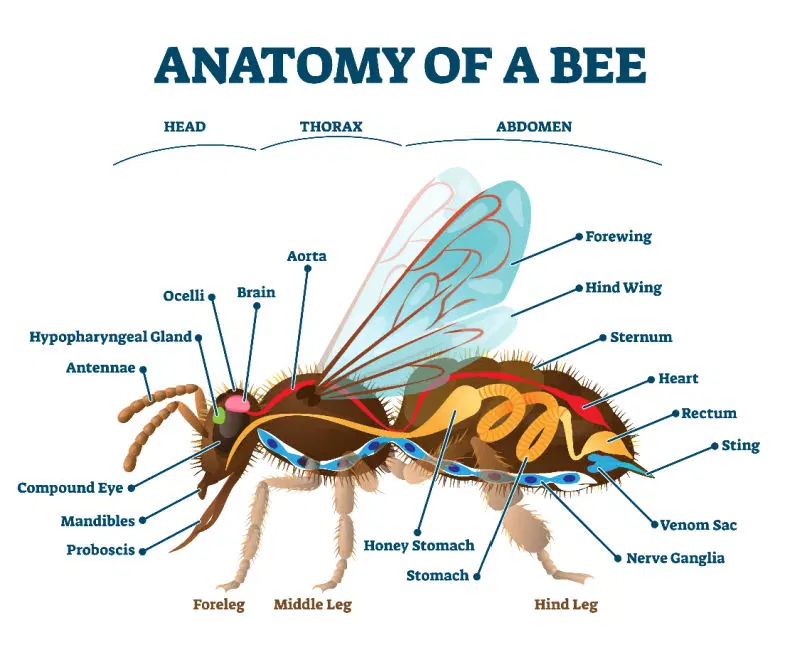Role of Worker Honeybees in the Beehive
Worker honeybees are vital to the survival and productivity of the colony. Their responsibilities include foraging, hive maintenance, nursing, honey production, temperature regulation, and defense.
- Foraging: Collecting Essential Resources: Worker bees gather nectar, pollen, water, and propolis from their surroundings. They travel miles to ensure the colony has sufficient food and materials for hive upkeep. This continuous effort supports the hive’s sustainability.
- Hive Maintenance: Constructing and Repairing: As skilled builders, worker bees use beeswax secreted from their bodies to construct and maintain the hive. They create honeycomb cells for storing honey, pollen, and developing brood. Additionally, they seal cracks and reinforce hive structures, ensuring a stable and protected environment.
- Nursing: Caring for the Brood: Worker bees nurture larvae by feeding them “bee bread,” a nutrient-rich mixture made from pollen and nectar. They also clean hive cells and remove waste, maintaining hygiene for the colony’s overall health.
- Honey Production: Transforming Nectar into Honey: Worker bees play a key role in honey production. They ingest nectar, process it through regurgitation, and deposit it into honeycomb cells. By fanning their wings, they accelerate evaporation, gradually converting nectar into honey.
- Temperature Regulation: Maintaining Optimal Conditions: To sustain an ideal hive temperature, worker bees fan their wings to circulate air. This process prevents overheating and ensures suitable conditions for brood development and honey storage.
- Hive Defense: Protecting the Colony: Worker bees guard the hive against intruders. Using their stingers, they defend the colony from predators and threats. In doing so, they sacrifice themselves if necessary to protect the hive’s inhabitants.
Worker bees are the backbone of the hive, handling multiple tasks that ensure its survival and efficiency. Their collective efforts contribute to the colony’s success and sustainability.







Leave A Comment